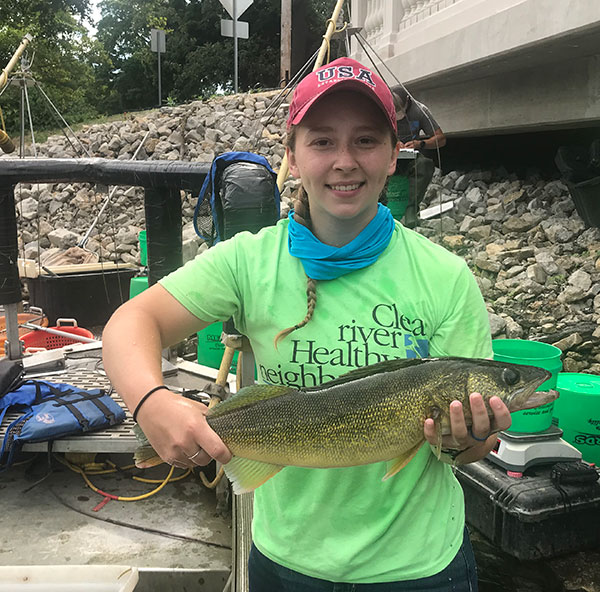By Louie Stout
 St. Joe River Walleye
St. Joe River Walleye
The bluegill and walleye population in Indiana waters of the St. Joseph River are doing quite well, according to Dar Deegan, aquatic biologist for Elkhart and South Bend.
The biologist spends many hours on the river each year surveying water quality and the health of fish populations.
He is somewhat concerned, however, about the diminishing sucker population which was once the dominate species that has now been replaced by sunfish populations.
While that may be good news to gamefish anglers, he is concerned that falling numbers of suckers signals a change in the food web. Suckers serve as an indicator to water quality issues.
“Suckers are a sensitive group of fish that feed on the equally sensitive critters on the bottom of the river,” Deegan explained. “This could be caused by the introduction of gizzard shad, zebra mussels as well as big flood events or even drought periods.”
Oddly enough, he noted that sunfish populations – to include bluegill, crappie, rock bass and long-ear sunfish – have exploded since shad showed up in the system. Shad compete for food with young gamefish.
“The river has cleared up with the zebra mussels’ influx which has led to different levels of sunlight penetration and more plant growth, so those things may play a role in sunfish expansion,” Deegan added. “Agriculture also is doing a better job with conservation land practices and it’s reducing some of the run-off problems coming into the river.”
Meanwhile, the walleye continue to do well. They are stocked every other year by the Michiana Walleye Association and the Indiana DNR.
Walleye populations have remained stable in size and age group structures. Growth rates, he added, are better than normal, with several fish reaching 15 inches their first year.
While many anglers complain they are catching sub-legal ‘eyes, Deegan says the adults are out there, especially downstream from the Twin Branch Dam.
“I was doing some fish tissue sampling as part of a contaminants study at Central Park a few weeks ago, and I saw so many walleye and big ones,” Deegan said. “I saw lots of 2 to 3 pounders and a handful in that 5- to 6-pound range.”
He surmised that those fish were escapees from the river above Twin Branch where walleyes are stocked. Deegan has been tagging adult walleyes he collects during surveys and gets reports from anglers who catch them.
“We have found that 10 percent of the 14-inches or longer walleyes we tag go over the Twin Branch Dam and are caught down river,” he said. “The ‘Maggie’s stretch’ (above Twin Branch) is providing the nursey for them and it seems a lot of big ones are caught downstream.”
He also added that the walleyes have provided a good fishery for shore anglers.
“Fishermen are clued into catching walleyes at places like Central Park,” he said.